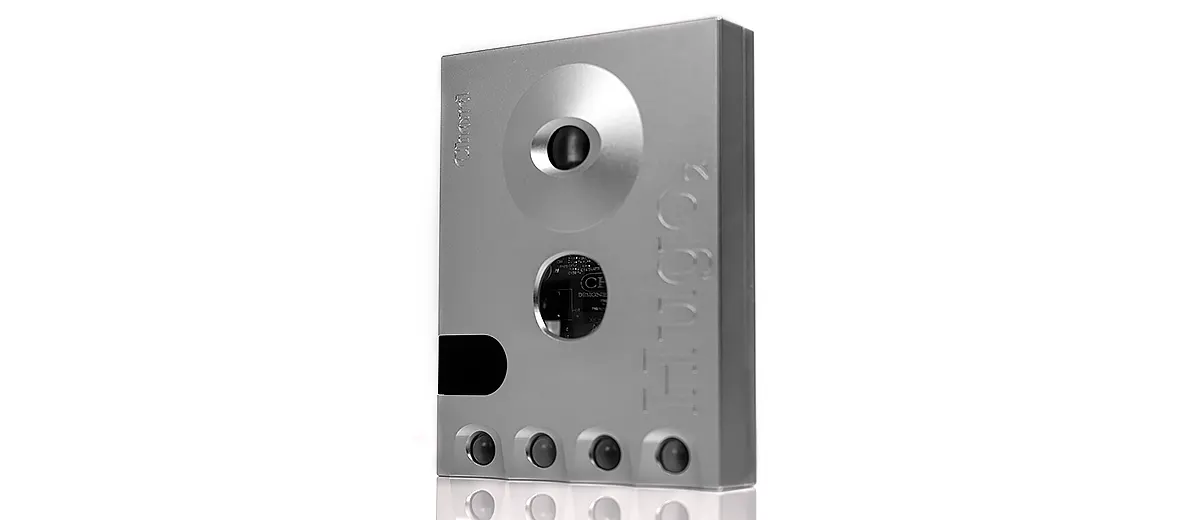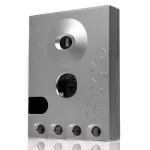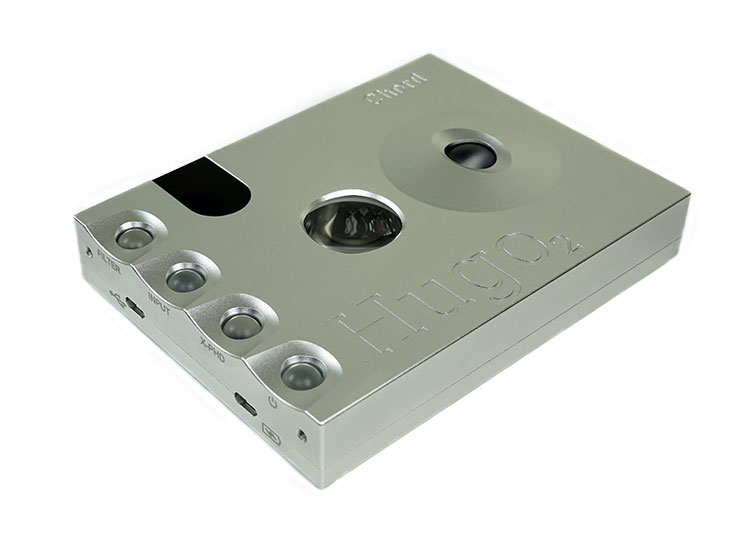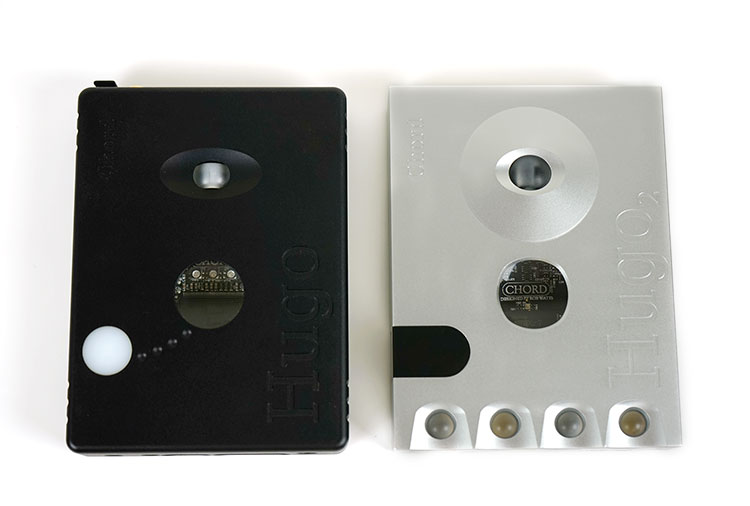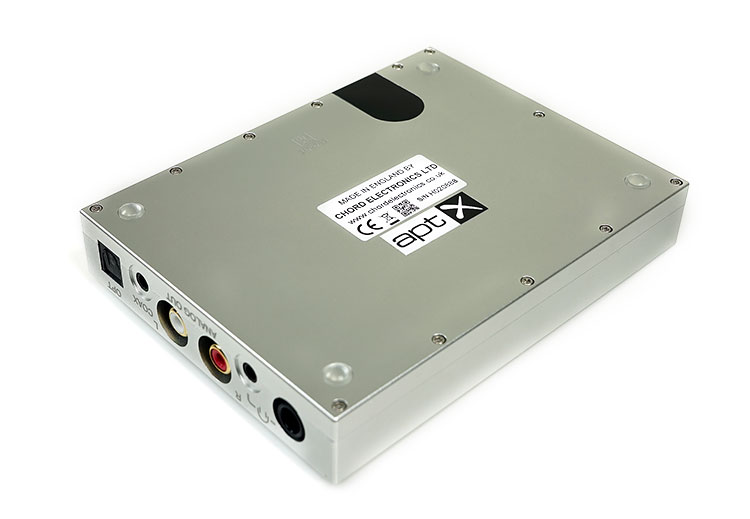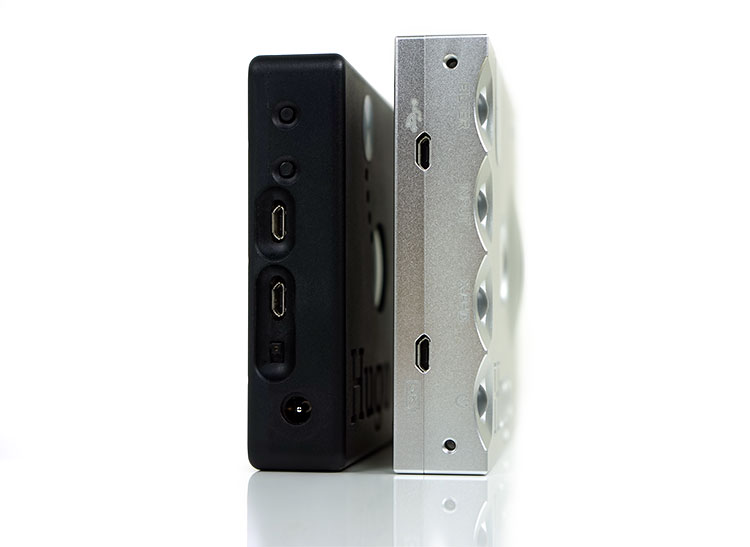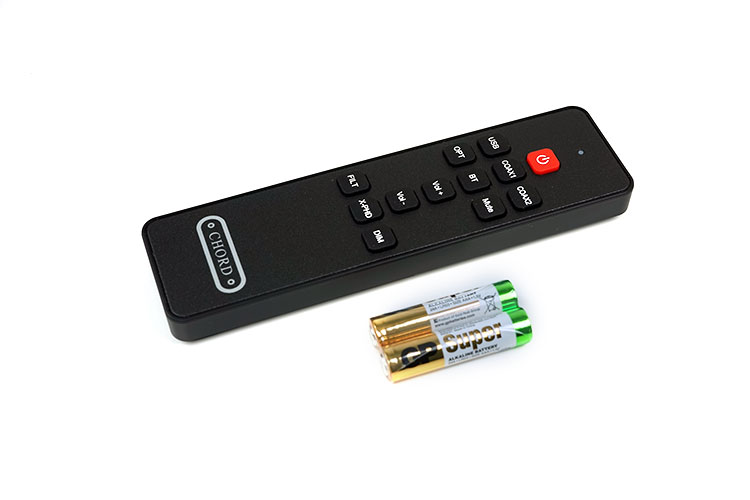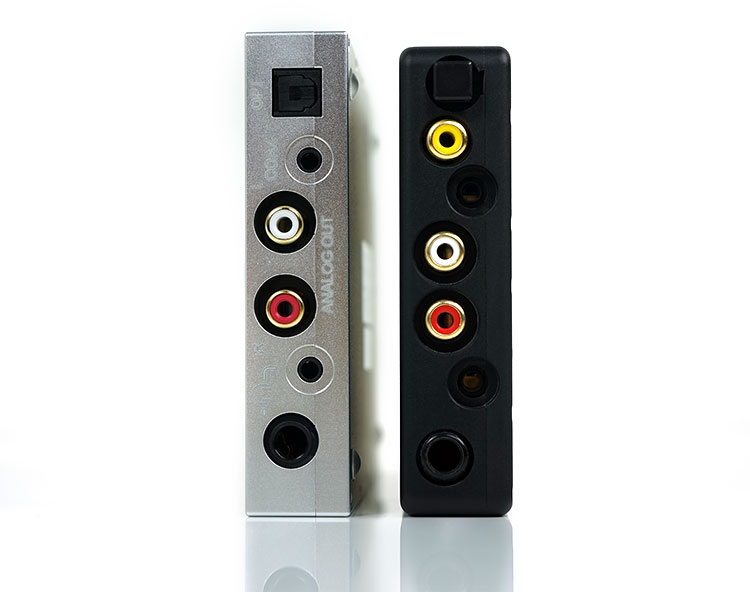Today, Marcus reviews the Chord Electronics Hugo 2, which is the second-generation transportable integrated headphones amplifier and in-house designed DAC. It is priced at £1,800.
Disclaimer: This sample was sent to me in exchange for my honest opinion. Headfonics is an independent website with no affiliate links or services. We thank the team at Chord Electronics for giving us this opportunity.
You can read more about the Chord Electronics products we reviewed on Headfonics by clicking here.
Note, this review follows our latest scoring guidelines which you can read in more detail here.
Has it been 3 years already since the launch of the original Chord Hugo DAC/Amp? Time flies in this hobby yet the Hugo is still hugely relevant and massively respected by many an audiophile as one of the high points in the portable audio market.
Since then, the launch of the Mojo has brought Chord Electronics to an even wider consumer market with its more plebicolous pricing point. John, Rob, and the entire team love to travel to support their products and have to be one of the most “people-friendly” bunch of company guys I have met to date.
In a way, I almost feel that Mojo has better prepared the market for the launch of the new Hugo 2 than the original Hugo. Its omnipotence in our local market is startling and perhaps created an attentive core audience ready for their next Chord “upgrade”.
However, to call the Hugo 2 a simple upgrade is an understatement of the year as it could be the best portable and the most advanced DAC on the market today.
Features
The purpose of the Hugo 2 remains the same as the Hugo 1 however, the technical capability and the ease of use have changed. It will appeal to anyone wanting something relatively discreet as a DAC component in a high-end system or as an all-in-one transportable high-end DAC/Amp for both headphones and IEMs.
FPGA Evolution
The Hugo 2 uniquely uses a next-generation FPGA Xilinx Artix 7 chipset rather than off-the-shelf DAC chips. This is an upgrade on the previous 45nm Spartan 6 inside the original Hugo 1.
The concept behind FPGA-based engineering design for audio devices was discussed in some detail in the Mojo review which you can find here. Essentially, Chord has more control in its engineering process than many of its competitors.
As I am reminded from going over the Mojo review of John Franks (CEO) own words over a chance dinner in late 2015 in Manila:
“The difference between us and a lot of other audio product manufacturers out there is that they are what we call “users” of DAC chips and we design our own DAC process from the ground up”
The key difference between traditional DAC designs and the ‘Chord way’ is the DAC implementation and the pulse array programming around it which are wholly developed by Chord and not “bought” from another supplier.
This is a very different process and in 2017 I still consider this to be light years ahead of the competition.
Better Digital Filtering
The switch to the Xilinx Artix 7 chipset (similar to the Mojo) is important in the context of how Chord measures the improved technical excellence in the Hugo 2 compared to the Hugo 1.
The XC7A15T processor is 30% faster than the older Spartan 6 of the Hugo 1 and is purported to be twice as efficient as the older Hugo 1.
The Watts Transient Aligned filters (WTA) tap-length capability has increased from 26,368 to 49,152 using a 10-element Pulse Array design. The longer the filter (more taps), the more finely the conversion response can be tuned.
Considering that the average off-the-shelf tap length is around a few hundred and designed by “someone else” then you can understand the level of nuanced control Chord has over their ability to improve on their products in the direction they want to go in.
Improved Usability
The Hugo 2 also builds on the customer feedback from the vast usage scenarios people put their Hugo 1 through, myself included!
So, in terms of ease of use as well as learning from the launch of the Mojo, the Hugo 2 is improved and provides a more “instant” familiarity to digital audiophiles in terms of what everything does and how.
From labeling to the positioning of buttons and inputs and outputs the Hugo 2 is now much more “savvy” or user-friendly.
Design
Form Factor
I wanted to focus more on the changes than simply a walkthrough of ‘what is’ because I believe the physical changes Chord has introduced on the Hugo 2 are more substantial in application than you might think.
Chassis changes
The move to an edged chassis over the older, smoother Hugo 1 is a curious change.
It is perhaps the only thing I am not keen on with the new form factor. It is a little sharper in the hand than the first-gen and also a little wider and deeper at 132mm (L) x 100mm (W) x 21mm (H) compared to 132mm x 97mm x 20mm.
Note these are my own taped measurements as the online specs would have you believe the Hugo 1 to be the same size but it’s not the case when placed side by side. You can see Hugo 2 as the bigger of the two.
Volume Dial Housing
Another design tweak that has a fairly substantial implication is the change in the housing around the volume control from flat to raised.
It looks nice and if the intended effect is to prevent accidental knocks affecting the volume (which does happen on Hugo 1) then it’s mission accomplished but only due to the fact you can no longer stack anything on top of Hugo 2 due to the lack of a flat surface.
The Hugo 2 is happier on the top of a stack rather than sandwiched in the middle or below.
Mojo Influence
I cannot thank Chord enough for moving that tiny power switch from the back of the Hugo 1 to the super easy-to-use Mojo-style bubble buttons on the ‘front of the Hugo 2.
Chord has recognized the quick and easy usability of the Mojo color light balls and implemented them at a much higher level on the Hugo 2.
The contoured button bedding in the new Hugo 2 chassis is both striking and practical in terms of accessing if something is indeed sitting above it as well as giving it a measure of protection from bumps and knocks.
Materials
As before you can get the Hugo 2 in two colors, silver, and black. Both are precision machined aluminum casing and the color orbs are constructed from fairly solid polycarbonate materials with enough translucency to allow the all-important color changes to shine through.
The glass viewing portal remains central on the Hugo 2 but this time there is a touch more visible branding shining through. Chord has also retained the acrylic signal window for BT to the far left but this time it looks a little more integrated and modern than the offset circular window on the older Hugo 1.
Underneath
Chord has also moved the sticky feet further out to the corners on the Hugo 2. The Hugo 1 had them a bit more central and slightly recessed into the chassis.
The older ones feel a bit more premium than the stick-on ones of the Hugo 2 but the better positioning and greater height means the Hugo 2 feels a bit more solid on flat surfaces and less prone to accidental knocks when placing it down.
The new sticky feet should be a lot cheaper to replace should you accidentally damage them.
Physical Controls
The Hugo 2 is a definite upgrade on the Hugo 1 for physical controls. Previously almost everything was housed in the tiny switch or button format at the “back” of the unit.
None of the controls had any labeling forcing one to either memorize or refer to the manual. The power switch button, as mentioned, was incredibly awkward to access with the AC jack inserted.
All that is now gone with the Hugo 2 with the implementation of the orb control system to the front alongside all the inputs and all the outputs at the back.
Everything is now properly labeled and accompanied by a fresh new short manual that admittedly can seem daunting on the first read but otherwise more than helpful.
Orb Controls
The orb indicators are split into 5 key areas. The top panel mounted is for volume control and moving from right to left on the front panel you have power on and off, X-PHD which is Chords’ popular crossfeed implementation, the type of input in use, and finally the all-new digital filter controls.
Color Schemes
Chord is still sticking to the color scheme to denote status and volume control across the orbs. Those familiar with the Hugo 1 and Mojo should adapt fairly quickly to the color scheme but for newcomers, it does require a period of adjustment and a certain level of memory retention.
On a very crude level, the volume range runs in 1db increments from red at the lowest volume level to yellow, green, blue, pink, purple, and shades thereof, finally ending in white for the highest volume as well as line out.
Filters
This is something entirely new for Hugo 2. There are now four digital filter settings each with its own specific color scheme for the digital control orb on the far left.
In a nutshell, you can move between a basically neutral setting or a slightly warmer setting with further tweaks on both with regard to high-frequency roll-off control.
Filter 1 is termed as incisive neutral with a white color pattern. The second filter is labeled as incisive neutral with a high-frequency roll-off and denoted with a solid green color. The third filter is basically a coloration or warm with an amber or orange orb color scheme. The final filter is warm again but with a high-frequency roll-off.
X-PHD
The crossfeed functionality has been retained on the Hugo 2 but now it is much simpler to understand and use with the orb control system.
Essentially the crossfeed functionality duplicates the effect of listening to speakers and generally tweaks both the depth and level of instrumental separation to mimic speaker presentations within a headphone.
You have 4 options as before ranging from a function off to min, medium, and maximum levels and all can be accessed in a linear order. Some headphones will respond better to it than others with the HD800, in particular, having a noticeable change-up.
Going Remote
Finally, a remote control for the Hugo 2. In many ways, it sets the tone for the primary purpose of the Hugo 2 as essentially a desktop device but even so the inclusion of the remote control makes life so much easier.
It is nothing fancy but it has everything you need at your fingertips with a decent range and supplied AAA batteries so start using it right away.
Controls include power off but not power on sadly. It also includes the ability to switch between digital outputs, access Bluetooth, volume controls, and mute as well as digital filters and X-PHD. You can also dim all the lights to your desired setting with a dim switch.
Sadly, there is no option for line out or analog which still has to be done at power-up in combination with the X-PHD button for RMS line-level output.
My presumption here is the lack of a remote control option is a safety feature as the volume will go very high if you press a line-out button.
Battery Life & Charging
Inside the Hugo 2, you will find 2x rechargeable custom Enix Energies batteries rated at 3.7v 9.6Wh Li-ion (lithium-ion (2600mAh). However, the Hugo 2 also has a slightly shorter battery life than the original Hugo 1 by up to 30% down from a rated 10 hours to around 7+ hours.
The good news is this is now a much easier device to recharge with its ability to charge through any 5v micro USB connection or the supplied AC charger. Whereas the Hugo 1 only had AC charging capability.
You can also charge and use the device at the same time using the USB charger which provides a much more flexible battery life cycle than previously.
Charging time has also been reduced to around a more acceptable 4 hours via Micro USB at 1.8amps (fast charge).
You still can stretch it if you like to a slower 8-hour charge on 1 amp but on the whole, this is a much better charging scheme than the older Hugo 1 which required a 30 min wait period before you could turn it back on when the battery was fully depleted.
Functionality
Wired
The Hugo 2 has slimmed down the wired connection options slightly from the Hugo 1. Gone are the dual 3.5mm stereo jacks and in comes a single 3.5mm output.
The quarter jack output has been retained along with a single USB input instead of the HD/SD USB split from the original Hugo. The new USB input can handle the full sampling range instead of the limitations of the previous dual USB inputs.
You still get the dual analog RCA outputs though they are a little bit more recessed into the chassis. Very wide-bore RCA tubes may not fit as easily as before. Optical and coaxial inputs have also been retained with similar decoding capabilities up to 24BIT/192kHZ for optical and 32BIT/768kHz for coaxial.
However, the coaxial connector has changed from the standard RCA to a multi-ring mini 3.5mm plug which will force a few to have to order converter plugs to get their existing cables working. If you happen to own a recent FiiO DAP or iBasso DAP you may be in luck as their coaxial converters will work.
Physically they are much more integrated now into the chassis with less room for dust to creep into the sockets which I found to be an issue with the old Hugo 1. For instance, the Hugo 2 now has a standard optical socket flap whereas the original Hugo 1 had a detachable plastic plug.
Wireless
BT wireless connectivity has been retained on the Hugo 2 with both AD2P and apt-X protocols and a sampling bit depth decoding capability of up to 44.1kHz – 48kHz – 16bit.
I would have loved to have seen apt-X HD as an additional protocol but as of now the apt-X HD capable receiving and sending devices are slim on the ground so perhaps this was not a cost-effective solution.
What is new is the power and range of the Bluetooth on the new Hugo 2. The receiver is now more sensitive and supports a longer range than previously capable on the Hugo 1.
Sample rates
The Hugo 2’s decoding capability has been widened and enhanced over the Hugo 1. Previously the Hugo 1 had an admirable but now dated maximum decoding and sample rates of 32/384kHz and DSD128.
Even the Mojo raced ahead of it when launched with better decoding and sampling ranges of up to 768kHz/32-bit.
The Hugo 2 now matches the Mojo with it also capable of decoding and sampling up to 768kHz/32-bit with a native DSD playback capability of up to DSD512 which is extremely future-proof considering DSD256 commercially available tracks are still largely rarefied air.
The Hugo 2 automatically switches sample rates depending on the source track being fed in so if you want to know if the Hugo 2 is correctly recognizing the sample rate of your source tracks then just have a peek at the viewing glass on the top panel to see what color it is displaying.
Red is 44.1, or the lowest rate all the way up to light purple at 768kHz and white for DSD.
Accessories & Packaging
The Hugo 2 packaging is more or less the same as the original Hugo. Both have slim understated black retail boxes that come packaged with an excellent selection of accessories. Sadly, as with the Hugo 1, there is no supplied leather case and you will have to purchase that separately.
I am not sure if the Hugo 1 case will fit, there are some slight dimensional differences, especially with the raised volume enclosure and new orb panel.
With the Hugo 2, you get an AC charger with a range of international plug terminations, a remote control with two fresh AAA batteries, and a variety of cables that differ very slightly from the original Hugo 1 package.
Instead of two short optical cables, you now get one short optical 3.5mm mini TOSlink to TOSlink connection for portable stacking as well as one long TOSlink to TOSlink optical cable for more desktop-oriented setups.
You also receive a short USB OTG cable for connecting to Android platforms including tablets, smartphones, and DAPs, and a regular USB-A to micro USB cable for charging and USB DAC out functionality.
I would have liked to have seen a coaxial converter plug for the new connection type included also out of the box to allow people to connect their existing coaxial cables right away.
Alongside all of this, you get a very detailed but much-appreciated manual that tells you everything you really need to know in terms of operation and remote control functionality which I highly recommend you read before starting.
Click on page 2 below for my sound impressions and recommended pairings.
Click on page 3 below for my selected comparisons.

